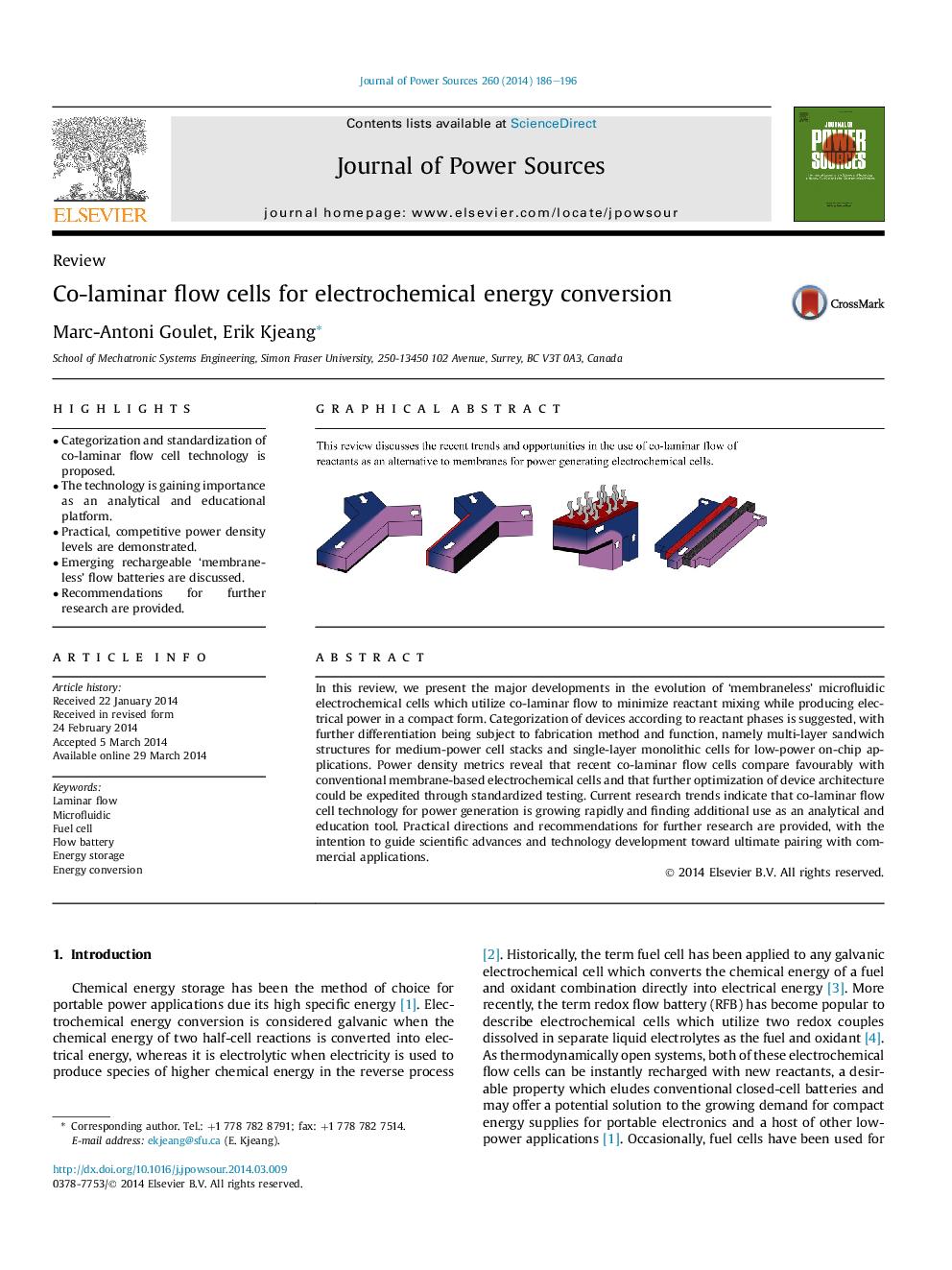| Article ID | Journal | Published Year | Pages | File Type |
|---|---|---|---|---|
| 1284128 | Journal of Power Sources | 2014 | 11 Pages |
•Categorization and standardization of co-laminar flow cell technology is proposed.•The technology is gaining importance as an analytical and educational platform.•Practical, competitive power density levels are demonstrated.•Emerging rechargeable ‘membraneless’ flow batteries are discussed.•Recommendations for further research are provided.
In this review, we present the major developments in the evolution of ‘membraneless’ microfluidic electrochemical cells which utilize co-laminar flow to minimize reactant mixing while producing electrical power in a compact form. Categorization of devices according to reactant phases is suggested, with further differentiation being subject to fabrication method and function, namely multi-layer sandwich structures for medium-power cell stacks and single-layer monolithic cells for low-power on-chip applications. Power density metrics reveal that recent co-laminar flow cells compare favourably with conventional membrane-based electrochemical cells and that further optimization of device architecture could be expedited through standardized testing. Current research trends indicate that co-laminar flow cell technology for power generation is growing rapidly and finding additional use as an analytical and education tool. Practical directions and recommendations for further research are provided, with the intention to guide scientific advances and technology development toward ultimate pairing with commercial applications.
Graphical abstractThis review discusses the recent trends and opportunities in the use of co-laminar flow of reactants as an alternative to membranes for power generating electrochemical cells.Figure optionsDownload full-size imageDownload as PowerPoint slide
